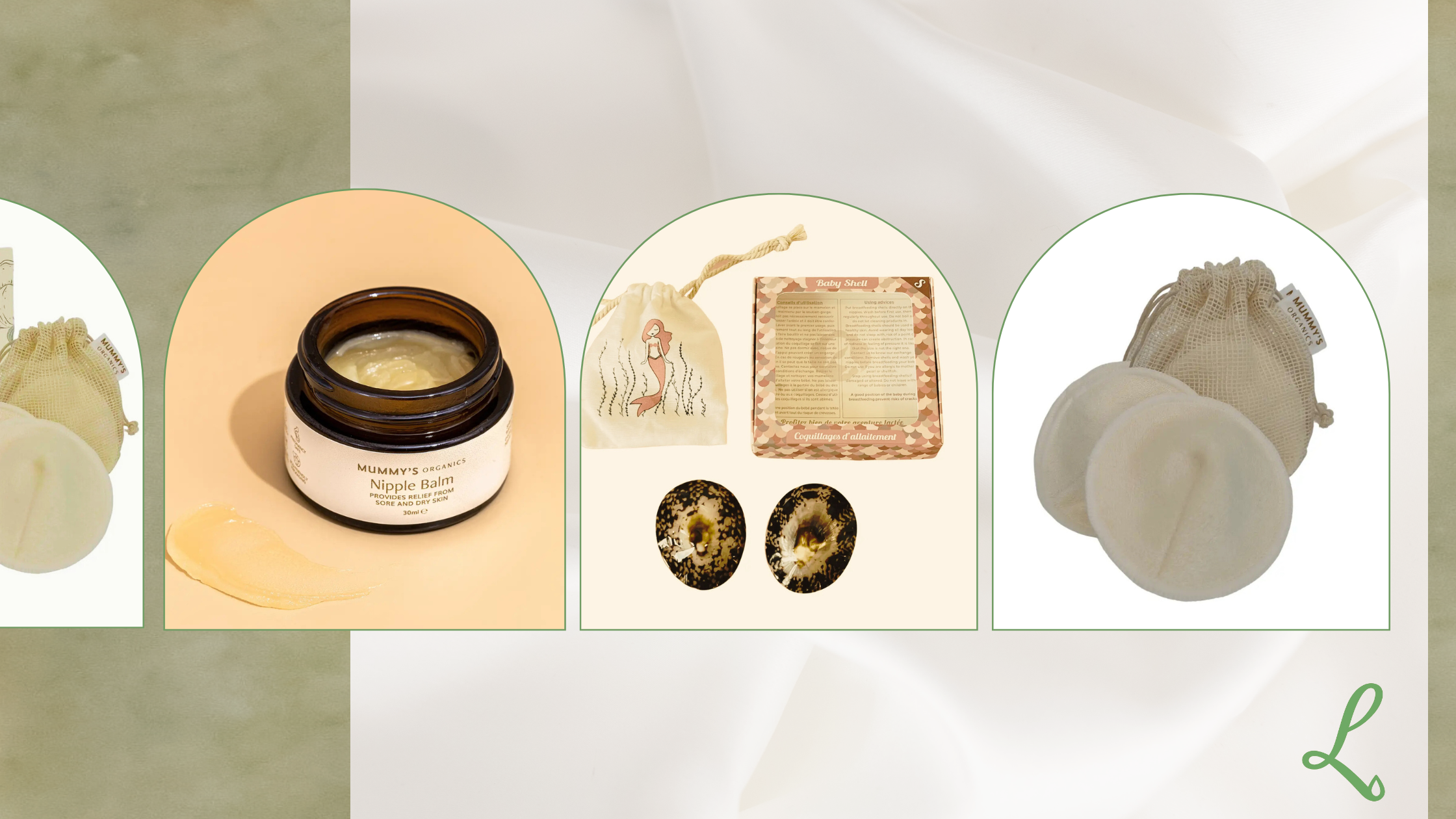
Nipple comfort tips for breastfeeding mums
Around 80 to 90 percent of breastfeeding women experience cracked nipples or fissures in the early weeks. In most cases the cause is a shallow or inefficient latch, which puts extra friction on delicate skin. The good news is that with the right latch technique and a little targeted care, most soreness can be eased and healing can happen quickly.
This simple guide will help you heal while you and baby learn together.
What you will need
-
A gentle nipple balm that is safe for baby
-
Soft, breathable breast pads
-
Soothing support for soreness
-
Natural shells that help protect and create a moist healing environment
Step by step care
1. Before each feed
-
Relax your shoulders and bring baby to you rather than leaning over baby
-
Aim for a deep latch with baby’s mouth wide, chin touching the breast, more areola visible above the top lip than below
-
If the latch pinches, gently break the seal with a clean finger and try again
2. Right after a feed
1. Hand express a few drops of milk and pat it over the nipple
2. Let your skin air dry for a minute
3. Apply a pea sized amount of nipple balm. No need to wipe off before the next feed
3. Between feeds at home
-
Give nipples as much fresh air as you comfortably can
-
If you are sore, place some hydrogel compresses on clean skin for cooling comfort. Follow the pack guidance for wear time and cleaning. Do not combine with balms unless the product instructions say it is suitable
-
If you prefer metal care, use some silver cups on clean, dry skin. A small drop of expressed milk under the cup can feel soothing. Remove and rinse daily. Do not use if you have a known sensitivity to silver
4. Out and about
-
Wear breathable and reusable bamboo pads to manage leaks and keep skin dry. Change pads often so the area does not stay damp
- Choose soft, non scratch fabrics next to skin
5. Protective care with sea shells
-
Place real sea shells over the nipple inside your bra to protect from friction and give the nipple space to heal
-
A drop of expressed milk inside each shell can create a calm moist environment for comfort
-
Empty and rinse the shells regularly. Pat your skin dry before putting them back on
-
Avoid wearing shells in bed so there is no pressure on the breast while you sleep
6. Night routine
-
Keep everything you need on your bedside table
-
After the last feed, milk drop, air dry, balm. If you use silver cups or HydroNips, place them on clean skin and follow the guidance for overnight use from the product instructions
-
Swap damp pads for fresh ones before sleep
7. When to switch products
-
Use HydroNips in the very tender stage for cooling comfort
-
Move to silver cups when you need ongoing antimicrobial support and gentle protection
-
Use sea shells whenever friction is your main issue and you want space for healing
-
Keep balm in the routine throughout the early weeks for softness and barrier support
8. Hygiene essentials
-
Wash hands before handling breasts or any of the items above
-
Rinse shells, cups, and HydroNips as instructed by the manufacturer. Let them dry fully
-
Change breast pads often. Damp pads can invite irritation
9. When to get extra help
-
If you have sharp pain that does not ease with a better latch, reach out to a lactation consultant
-
If you see deep cracks, bleeding that worries you, fever, flu like aches, or shiny red patches, contact your midwife or GP
-
If you suspect thrush, avoid occlusive products until you have a plan from a health professional
Every breastfeeding journey is unique, and a little extra support can make all the difference. If you'd like to learn more about why nipples become sore and how to soothe them gently, the NHS offers a clear and approachable guide here.
For deep insight on causes like latch issues and practical tips for healing, La Leche League’s article is truly supportive and accessible.



